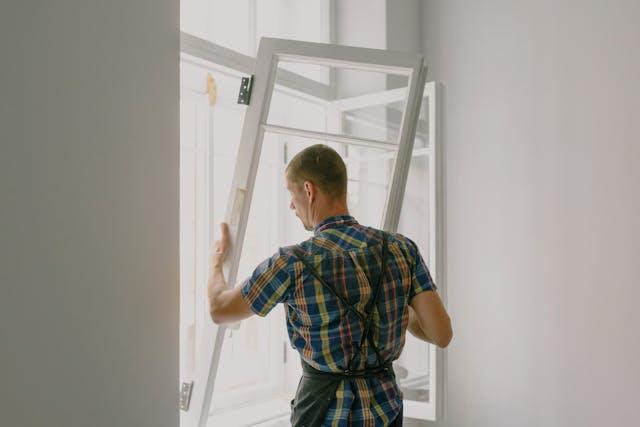Cold around the frame, condensation on the glass, noise from the street that won't let you rest... Sometimes the problem isn't the weather outside, but the installation of the windows: inaccurate leveling, missed seals, poorly selected glazing units, or outdated PVC/aluminum frames. Here we gather a simple plan for when it's time to repair windows or replace frames, what to demand from the contractor, and how to achieve long-lasting thermal insulation and soundproofing without unnecessary expenses.

5 clear signals that it's time for action
1) Constant condensation and wet sills
Often a sign of "cold" bridges and unsuitable glazing. Sometimes adjusting and new seals help, other times — replacing with energy-efficient glass.
2) Currents around the frame
Causes: worn seals, decreased pressure, installation of frames with gaps in the foam. Solution: adjustment of fittings and replacement of seals; for chronic problems — re-installation.
3) Difficult opening/closing
Imprecise installation or adjustment of hinges. Long-term "abuse" deforms the frame and wears out the hardware.
4) Noise from the street
Single or thin glass unit and lack of perimeter seals. In bedrooms, it makes sense to have an acoustic package and solid seals.
5) High heating/cooling bills
Old window frames (PVC or aluminum without a thermal break) "let" heat escape. Replacing the frames + quality installation = noticeable savings.
Mini case: "We'll pass with a little foam"
Apartment on the boulevard, new windows, but installed "quickly": after a month — condensation, drafts, and noise. During inspection: foam without strips/strips of the wrong class, missed points, lack of internal sealing. Consequences: second installation + new seals, partial correction of the sills.
💡 Conclusion: with windows, the "cheap" part is often the installation. The right technology costs less than rework.

What does "quality window installation" mean
• Leveling of the frame vertically/horizontally, even joints.
• Mechanical fixation (anchors/brackets) + proper installation foam; internal vapor-tight and external vapor-permeable sealing as needed.
• Thermal bridges under control — interrupted at aluminum frames, correct spacers under the frame.
• Fittings and adjustment — the pressure is set, the wing "lies" smoothly.
• Finish — no cracks in the plaster/paint around the frame, the baseboards are stable and leveled.
Myth / Fact
Myth: "All double-glazed units are the same."
Fact: The chamber, glass, gas, and spacer affect the U-value, condensation, and acoustics. For a bedroom facing a boulevard, the acoustic package is often a "must."
How to Read Offers — A Fair Comparison
Request a breakdown: dismantling/removal, preparation of the opening, frame/leaf (material and profile class), type of glazing, fittings, seals, adjustment of hinges, sills, corrections to plastering and painting, warranty. Compare not only the price but also the stages, materials, deadlines, and conditions for corrections.
Useful reading for choosing a reliable contractor:
• How to Choose a Reliable Craftsman: A Practical Guide — what to look for in profiles and offers.
• Myths about specialists: it's time to get informed, not to guess — we debunk typical misconceptions when working with craftsmen.
Quick checklist before ordering
• 📸 Photos: inside/outside + detail of cracks/sills.
• 📏 Dimensions: width, height, depth of the journal/box.
• 🧱 Wall material: brick, concrete, drywall.
• 🧩 Needs: mosquito nets, child locks, sound insulation, type of glazing.
• 🗓️ Deadline and access to the site.
• ✅ Warranty for installation and components.

Mini-FAQ
How long does it take to replace a window?
Usually 2–4 hours per window (depending on size/access). Full apartment — within a day or two.
Do I need to buy materials in advance?
No. The master carries compatible profiles, seals, fittings, and consumables. You approve the specification.
Can I just adjust instead of replacing?
Yes, with preserved frames and a solid double-glazed unit, often just adjusting the hinges and new seals is enough.
Typical mistakes (and how to avoid them)
• Selection by lowest price → missing detail on installation/sealing.
• Without specification for the glazing unit → condensation/noise.
• Lack of finish → cracks in the plaster and a messy baseboard.
• Unclear warranty → difficult return for corrections.
Conclusion:
Quality window installation and repair is an investment in comfort, silence, and bills. With the right glazing, tight seals, and precise installation, you get dry sills, quiet in the bedroom, and warmth in the winter. Choose a proven contractor, request a clear quote, and accept the work with a checklist — the result is worth it.